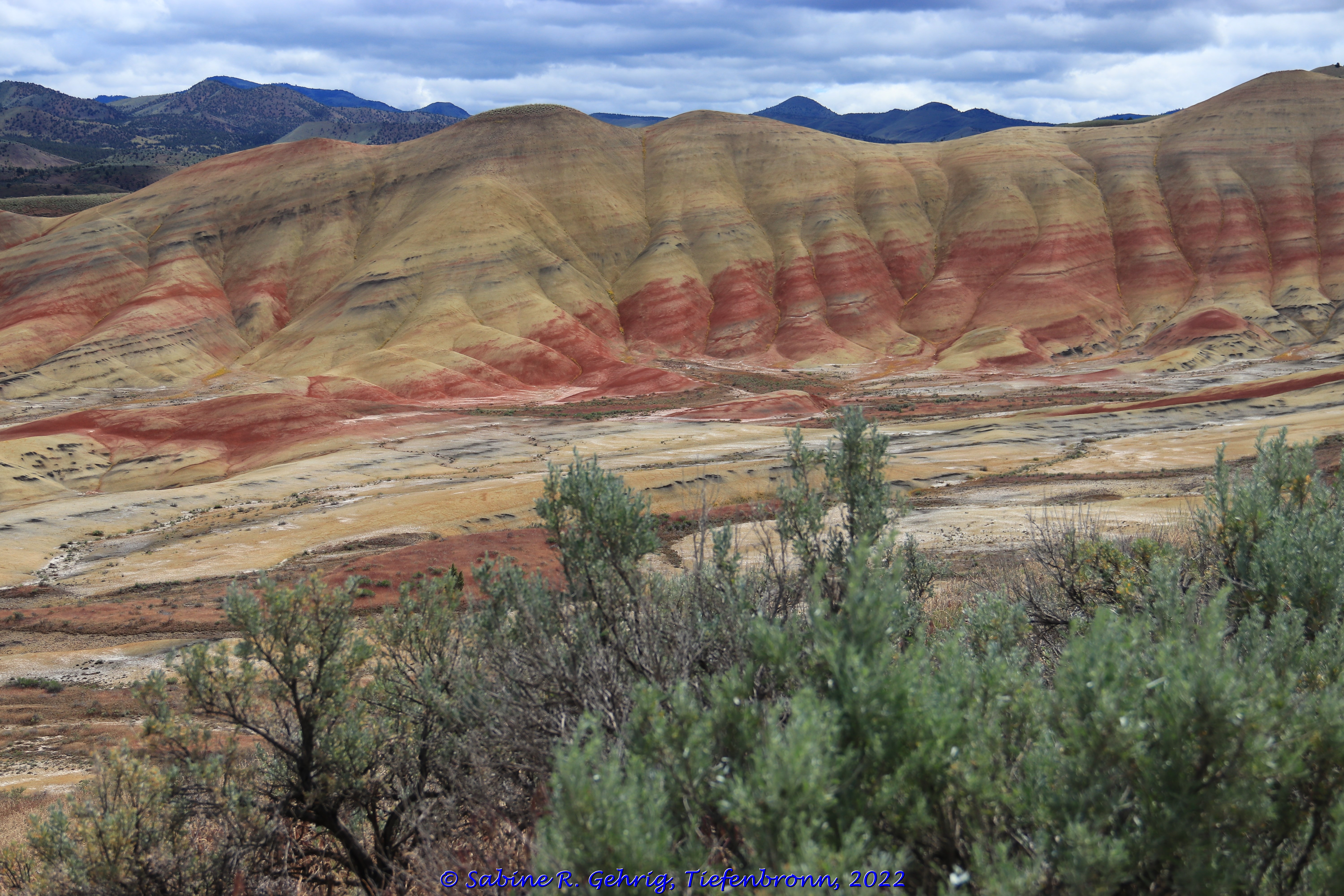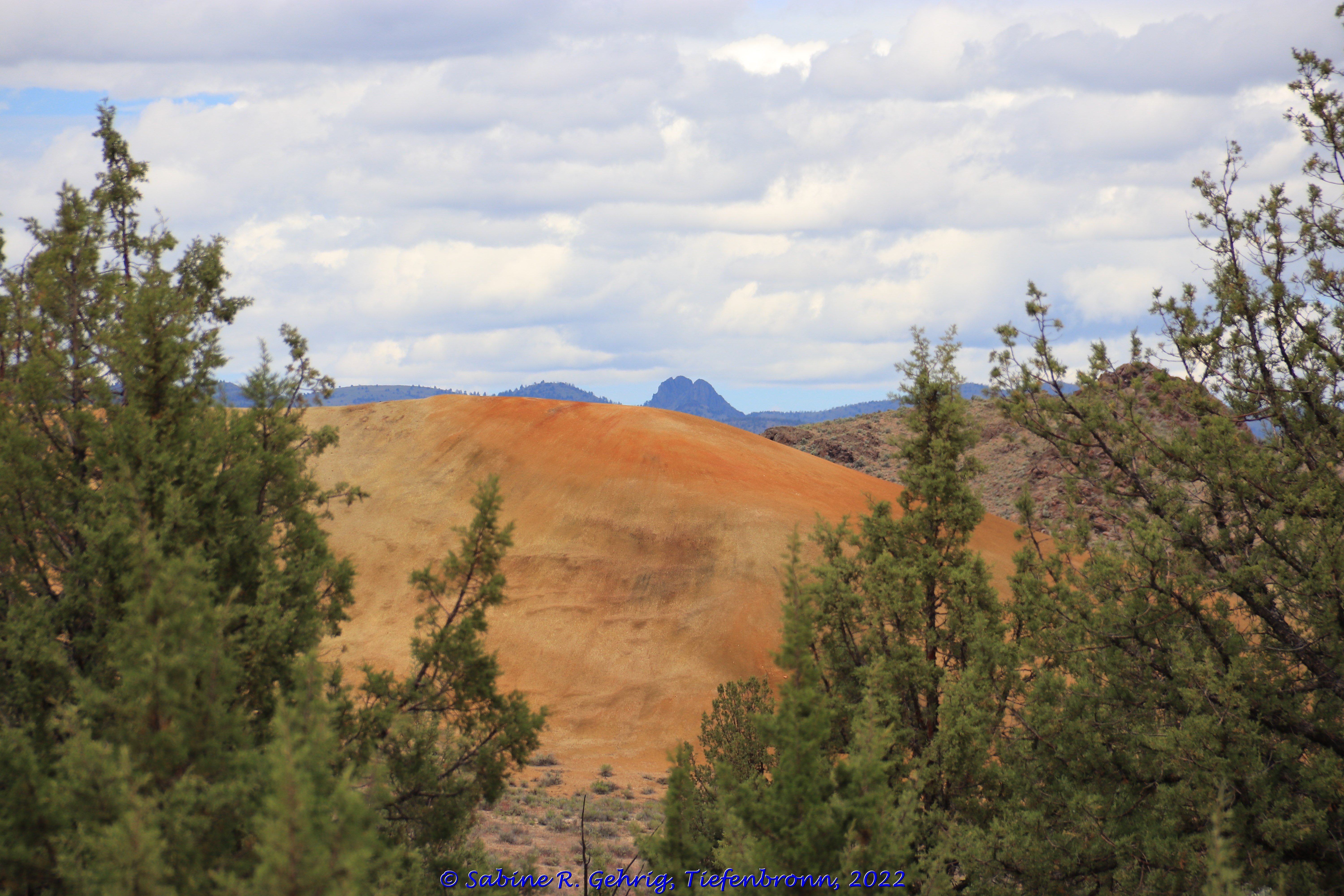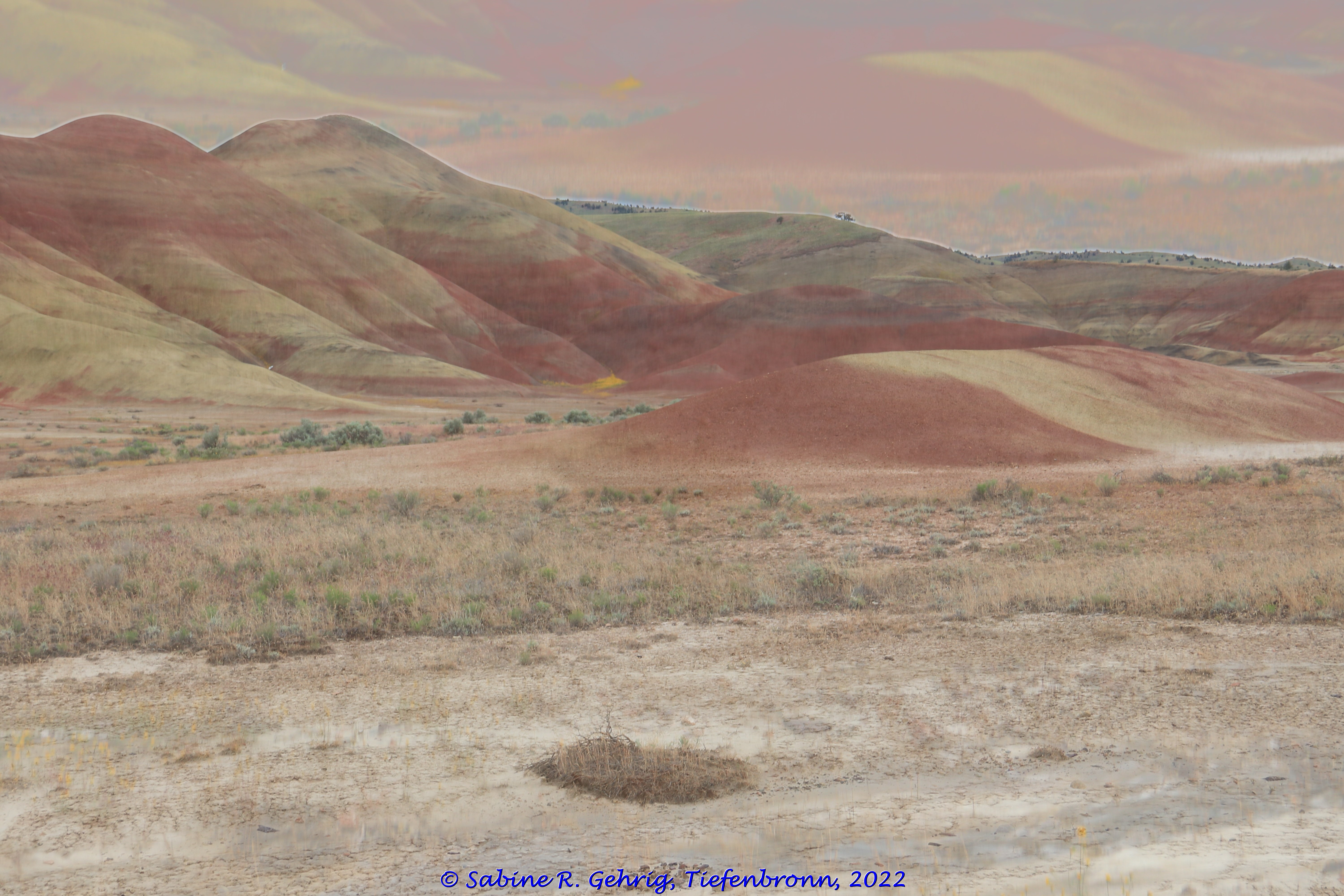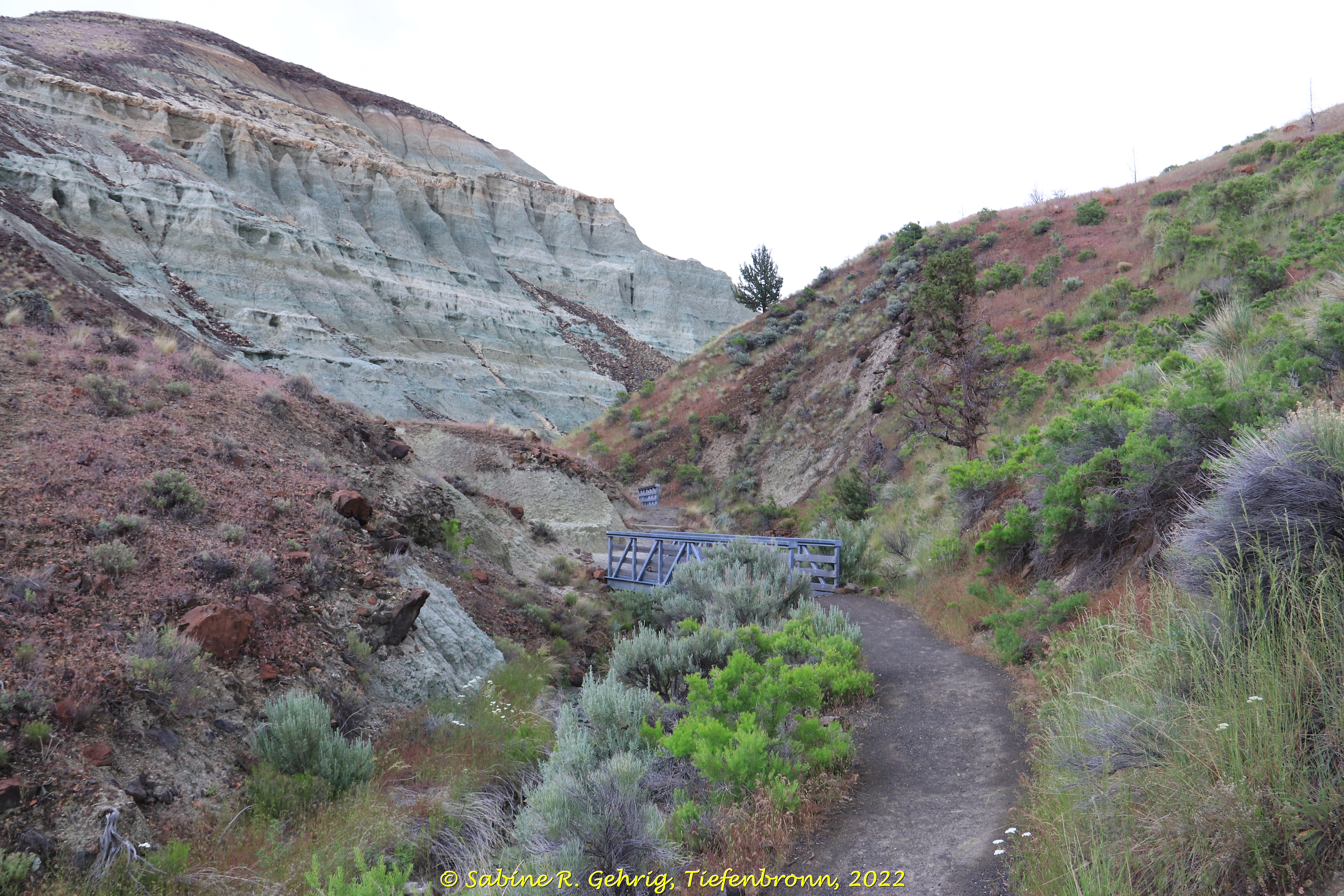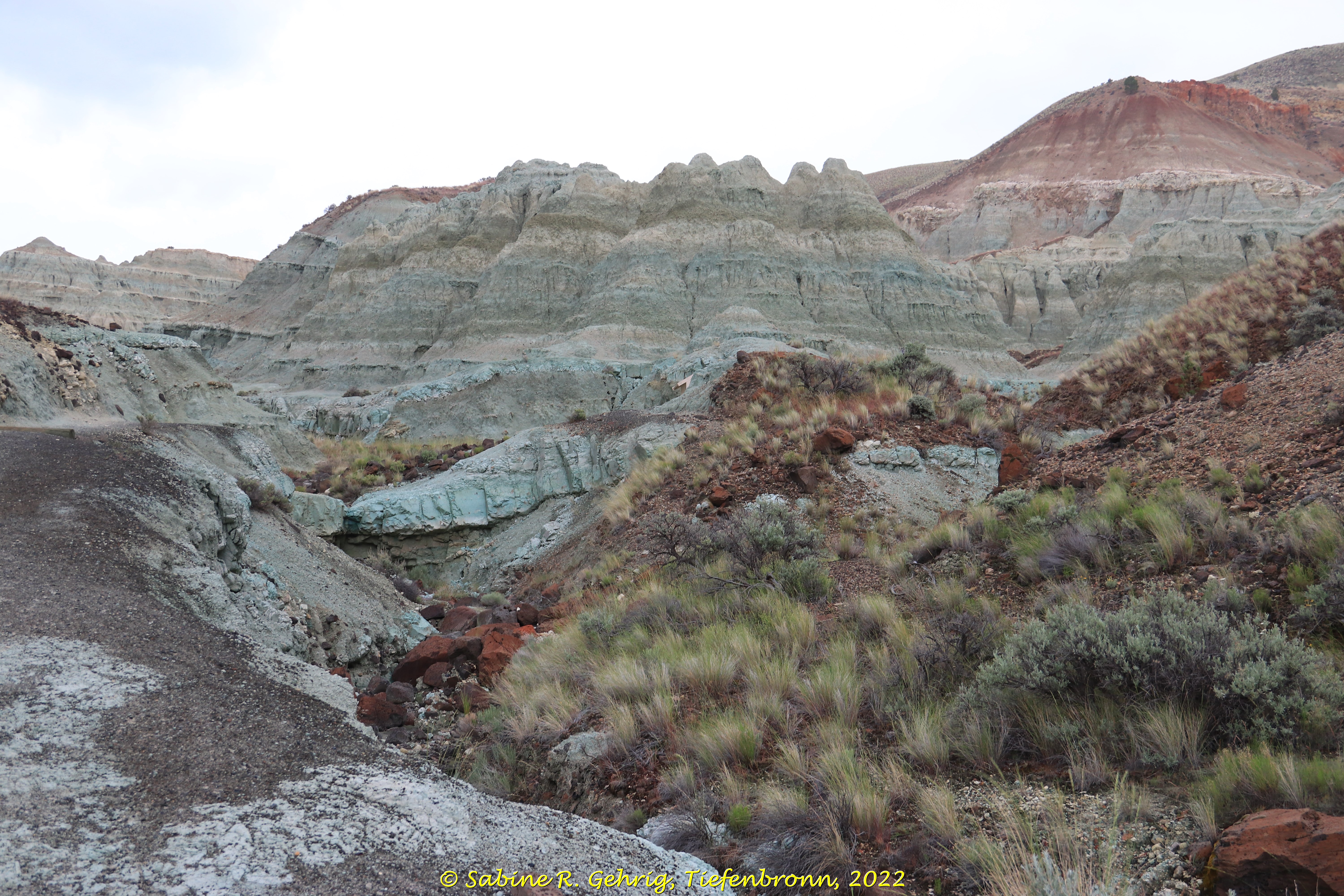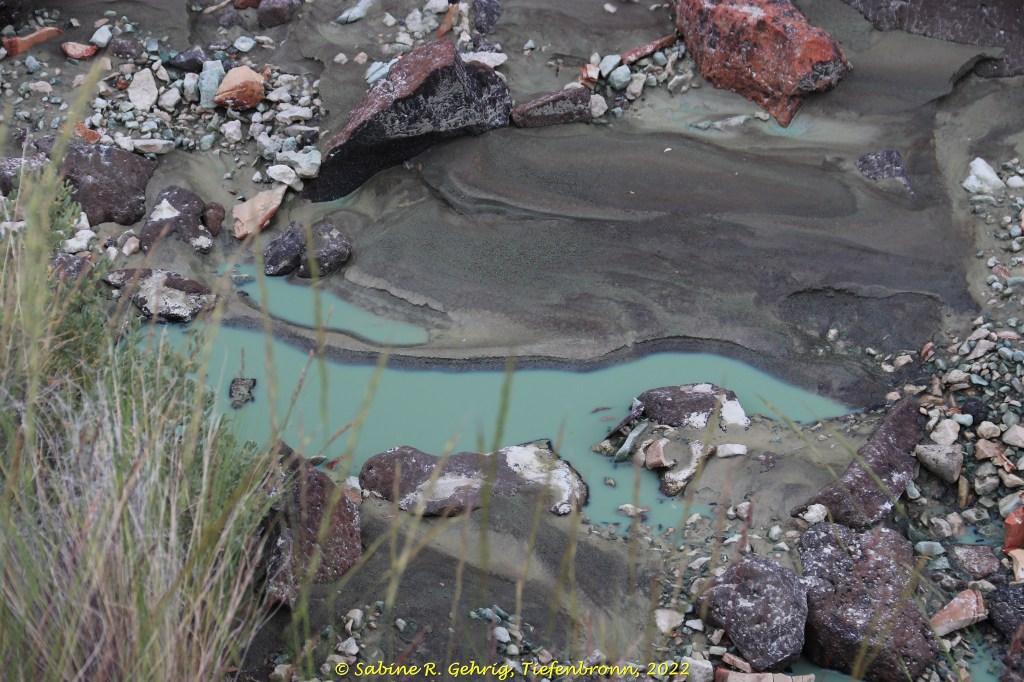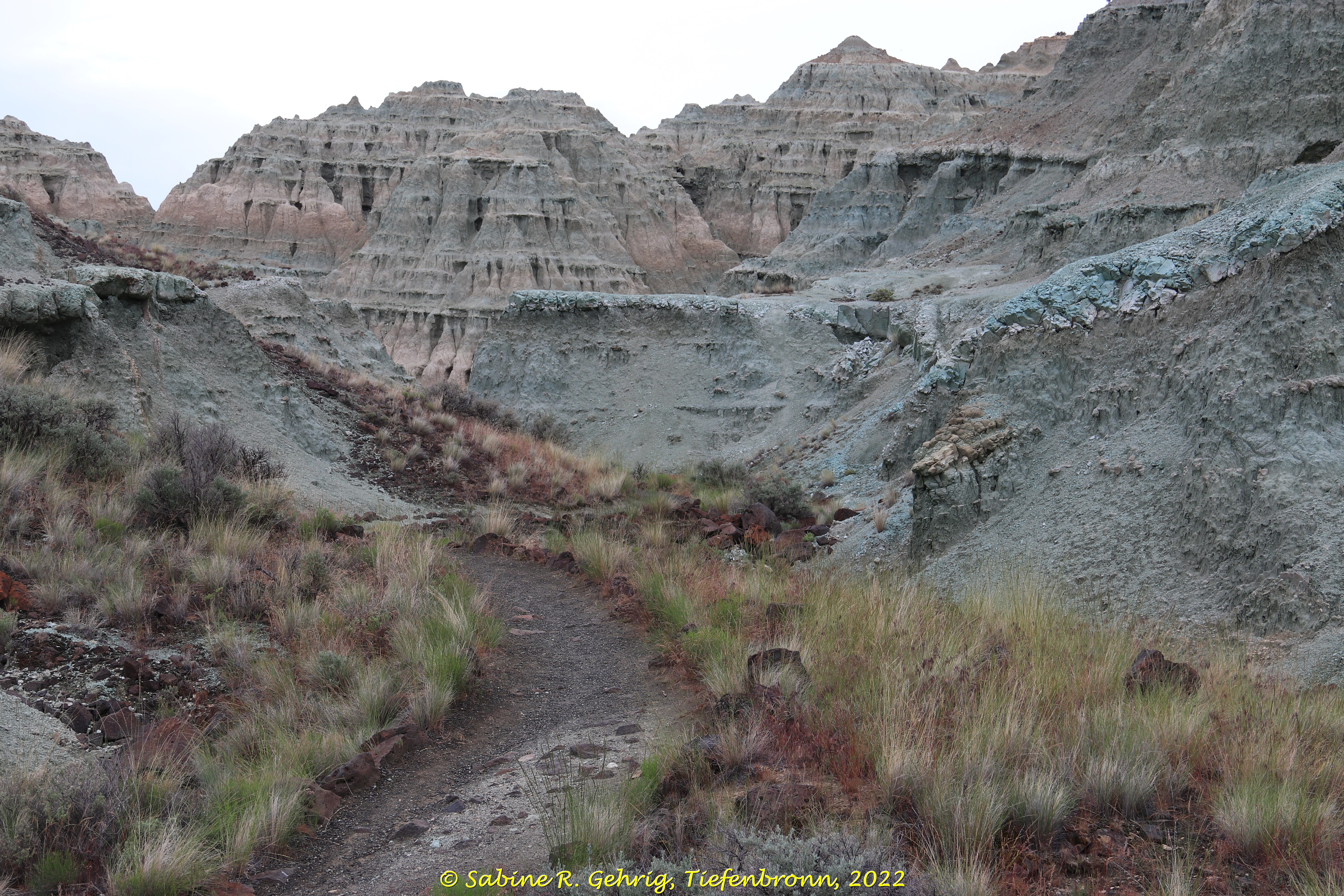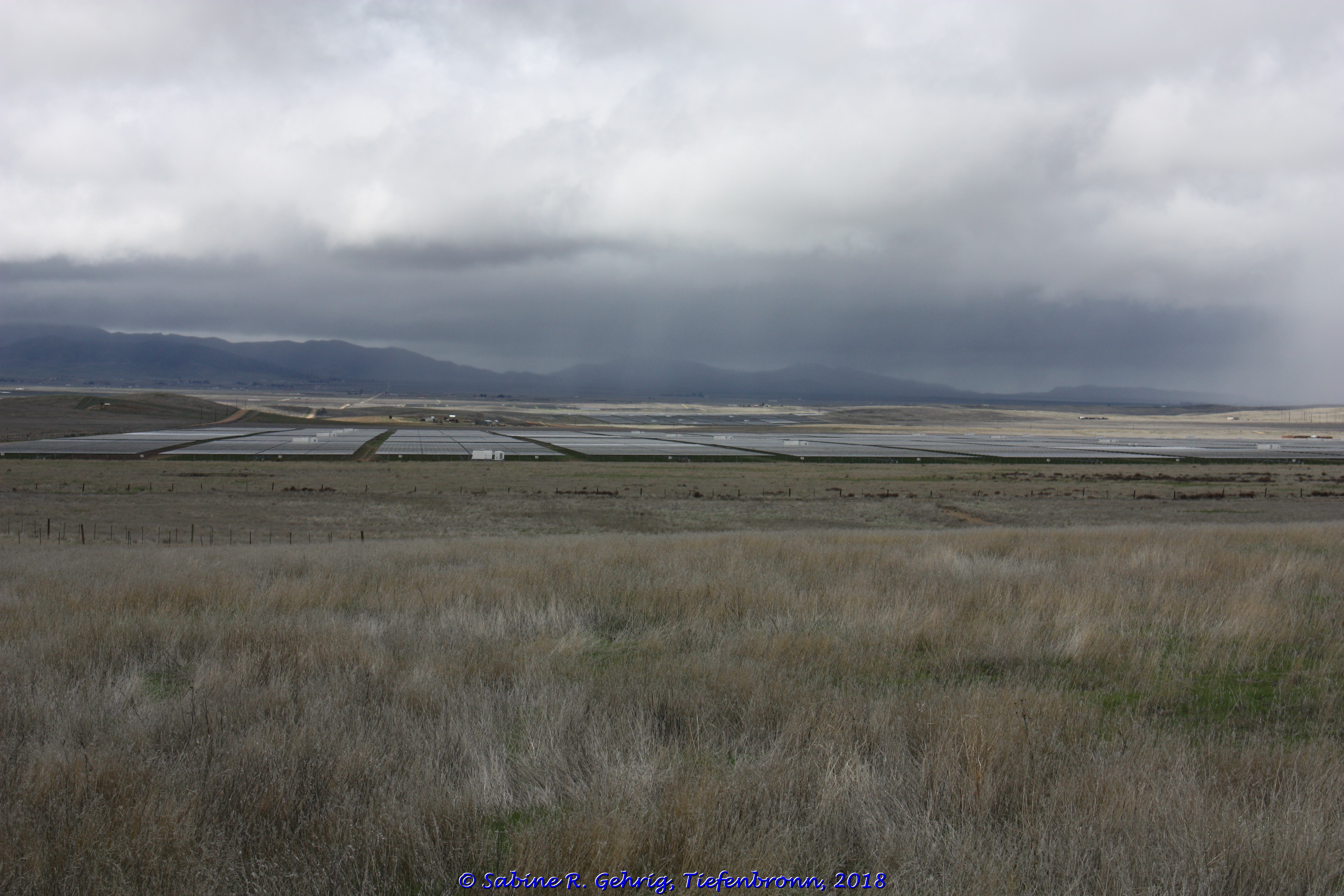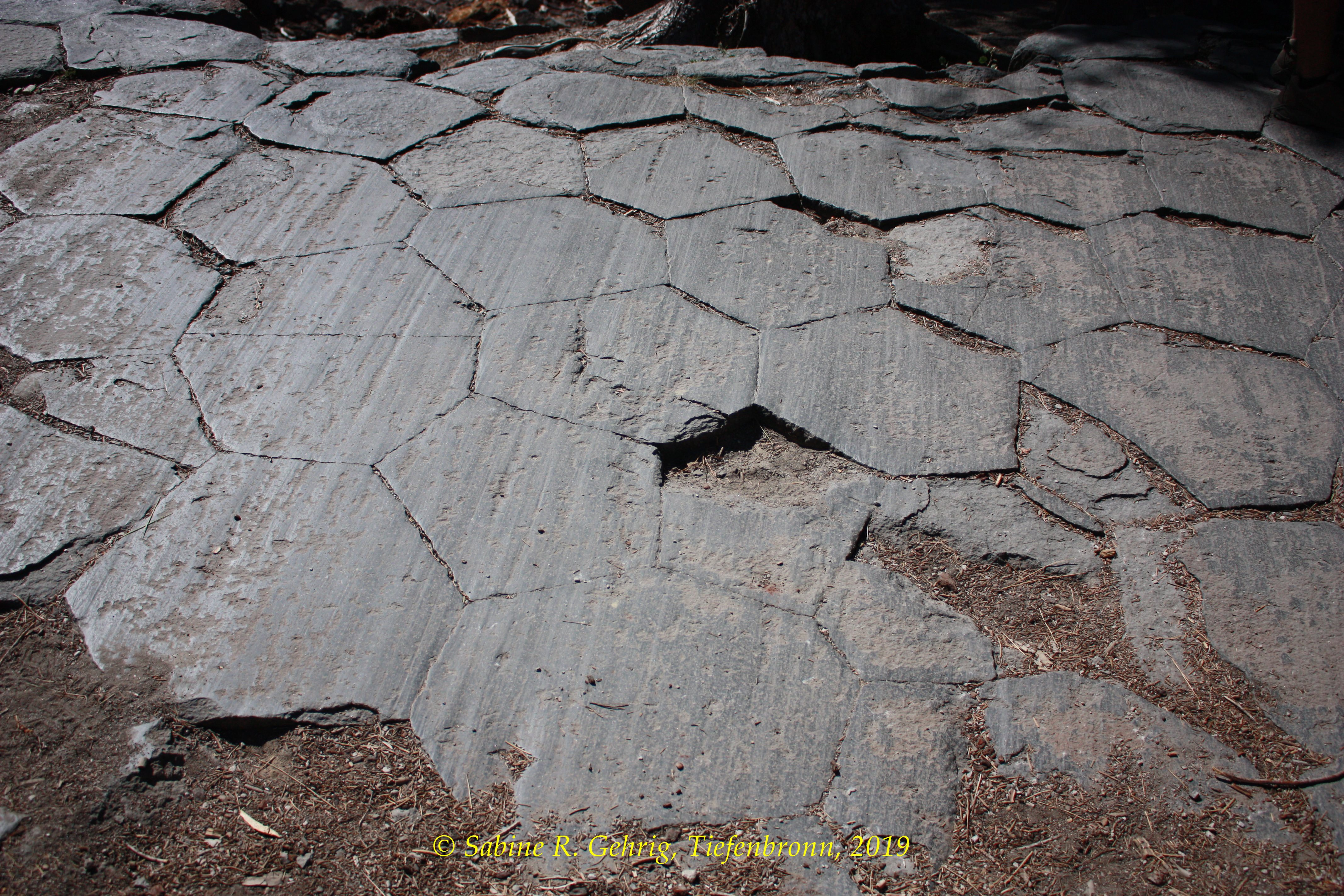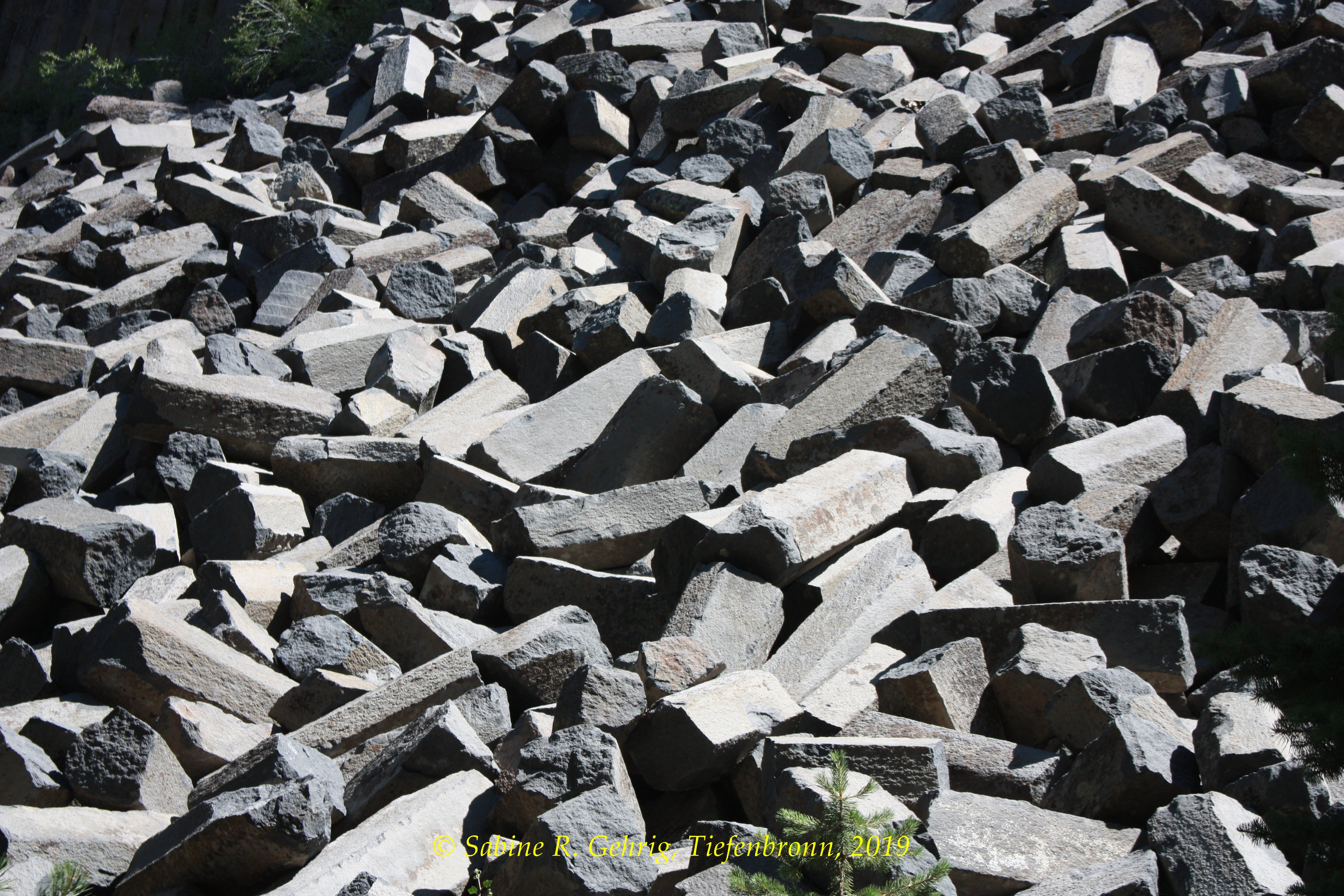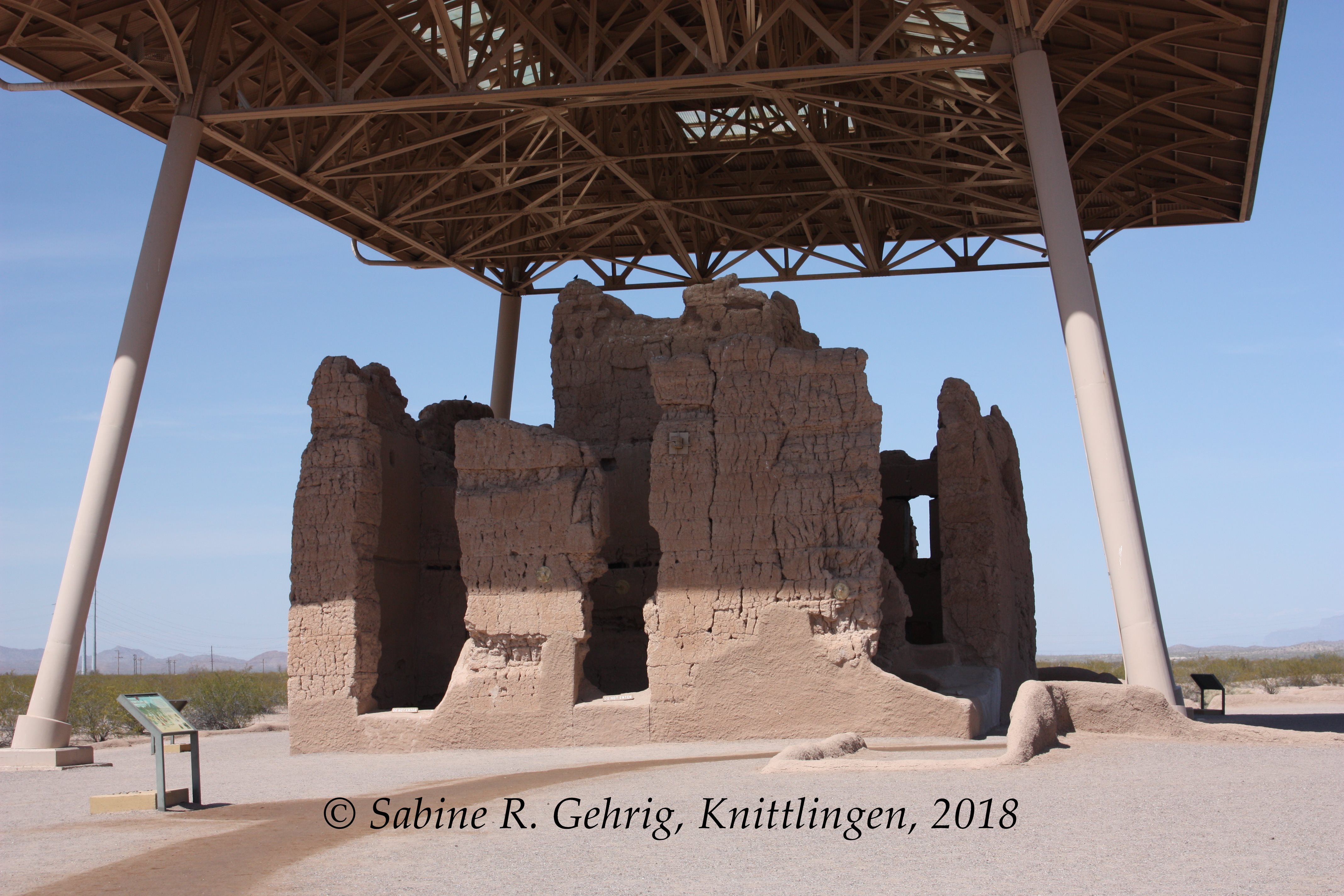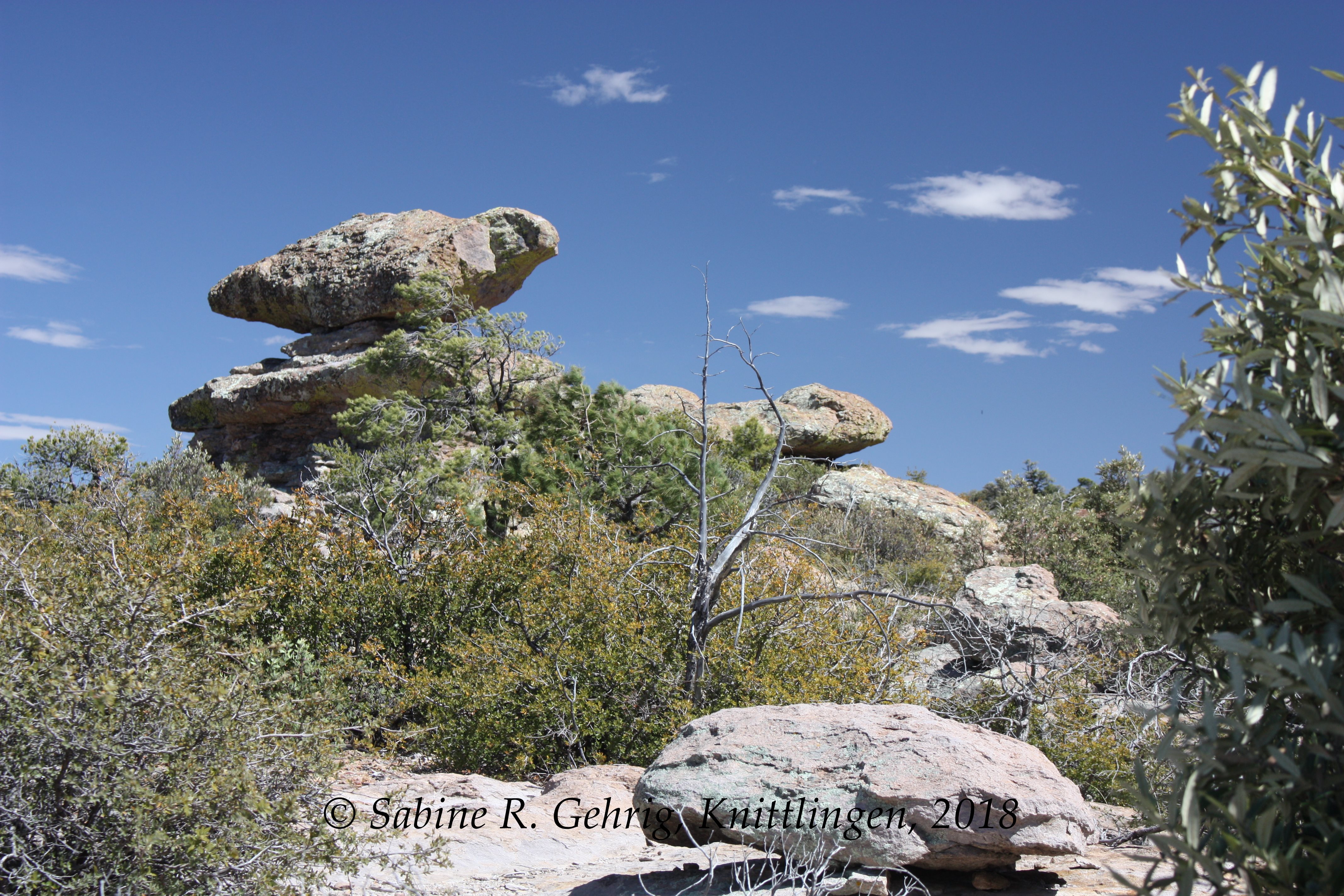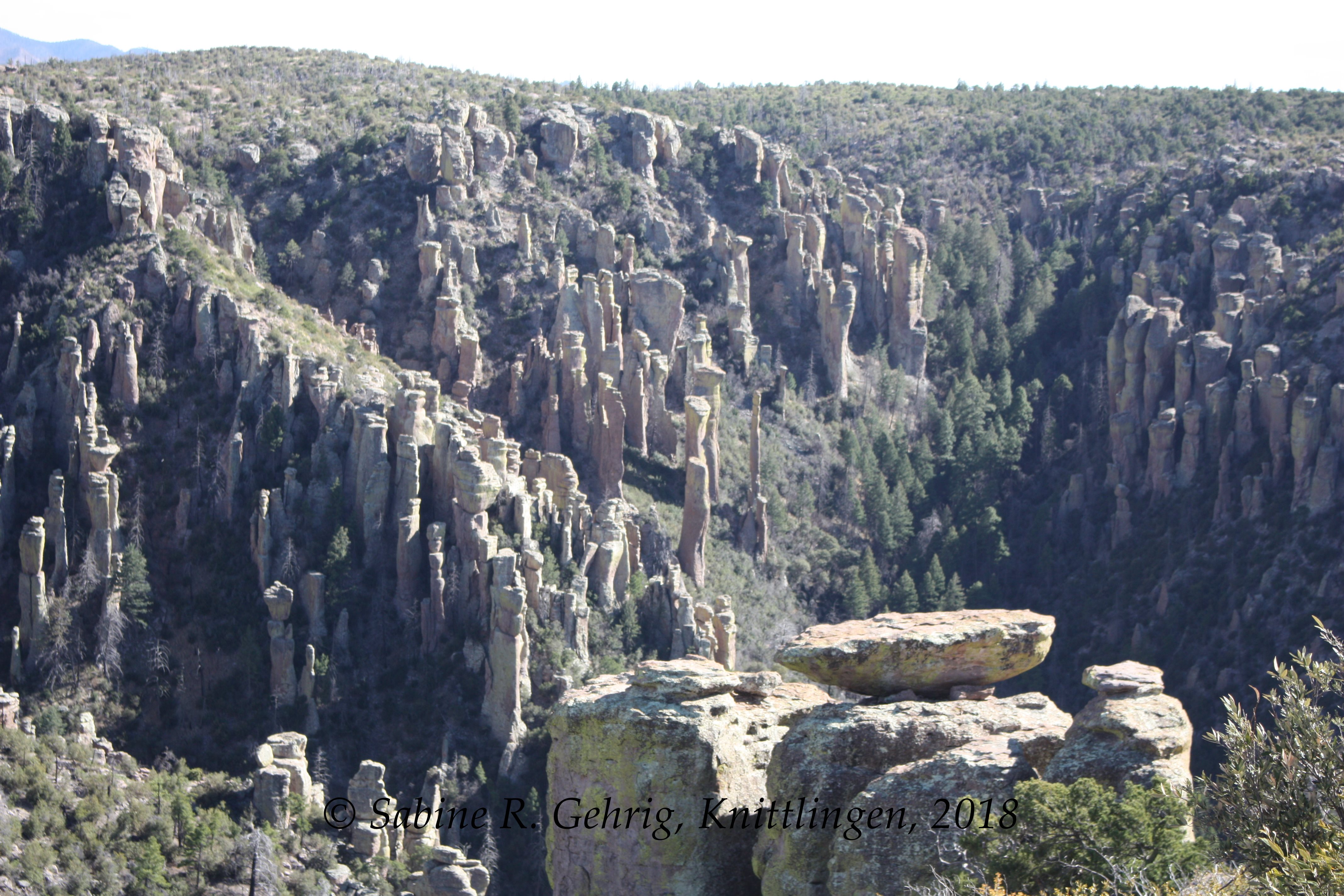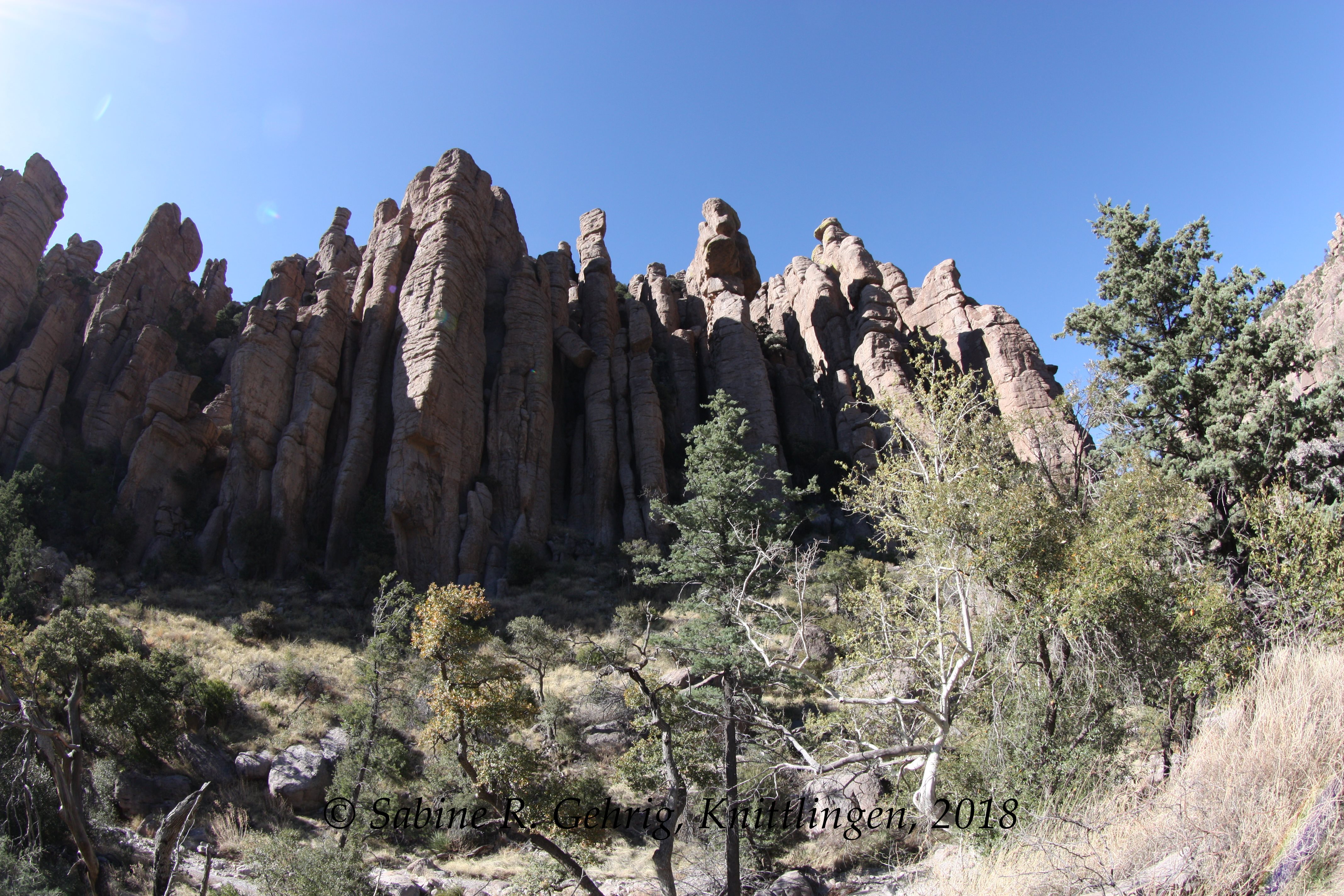Die Natur und zwar schon vor langer Zeit. Die Farben spiegeln die klimatischen Veränderungen in der Zeit von 34 bis 28 Millionen Jahren wider, nachdem vor 35 Millionen Jahren jede Menge Asche von den Vulkanen der Cascade Mountains hier abgelagert wurde. Durch verschiedene Prozesse wurde mit der Zeit Stein daraus. Während es zu Beginn dieser Zeit noch tropisch feucht war, entstanden die rötlichen Farbtöne. Als es dann kühler und trockener wurde, entstanden die gelblichen und bräunlichen Töne. Alle Schichten enthalten zahlreiche Mineralien und Fossilien. Der dunkle, schwarze Boden ist Braunkohle; graue Farben kommen z. B. vom Schlamm- und Schiefergestein und schwarze Flecken sind auf Manganoxid zurückzuführen. Und wo liegen diese Gemälde? In der Painted Hills Unit des John Day Fossil Beds National Monument in Oregon.
English Summary
Who Has Painted Here?
Nature, and a long time ago. The colors reflect the climatic changes in the period from 34 to 28 million years ago, after a lot of ash from the volcanoes of the Cascade Mountains was deposited here 35 million years ago. Through various processes over time, the ash turned into stone. While it was still tropically humid at the beginning of this time, the reddish hues developed. Then, as it became cooler and drier, the yellowish and brownish tones developed. All layers contain numerous minerals and fossils. The dark, black soil is lignite; gray colors come from mudstone and shale, for example, and black stains are due to manganese oxide. And where are these paintings located? In the Painted Hills Unit of the John Day Fossil Beds National Monument in Oregon.
